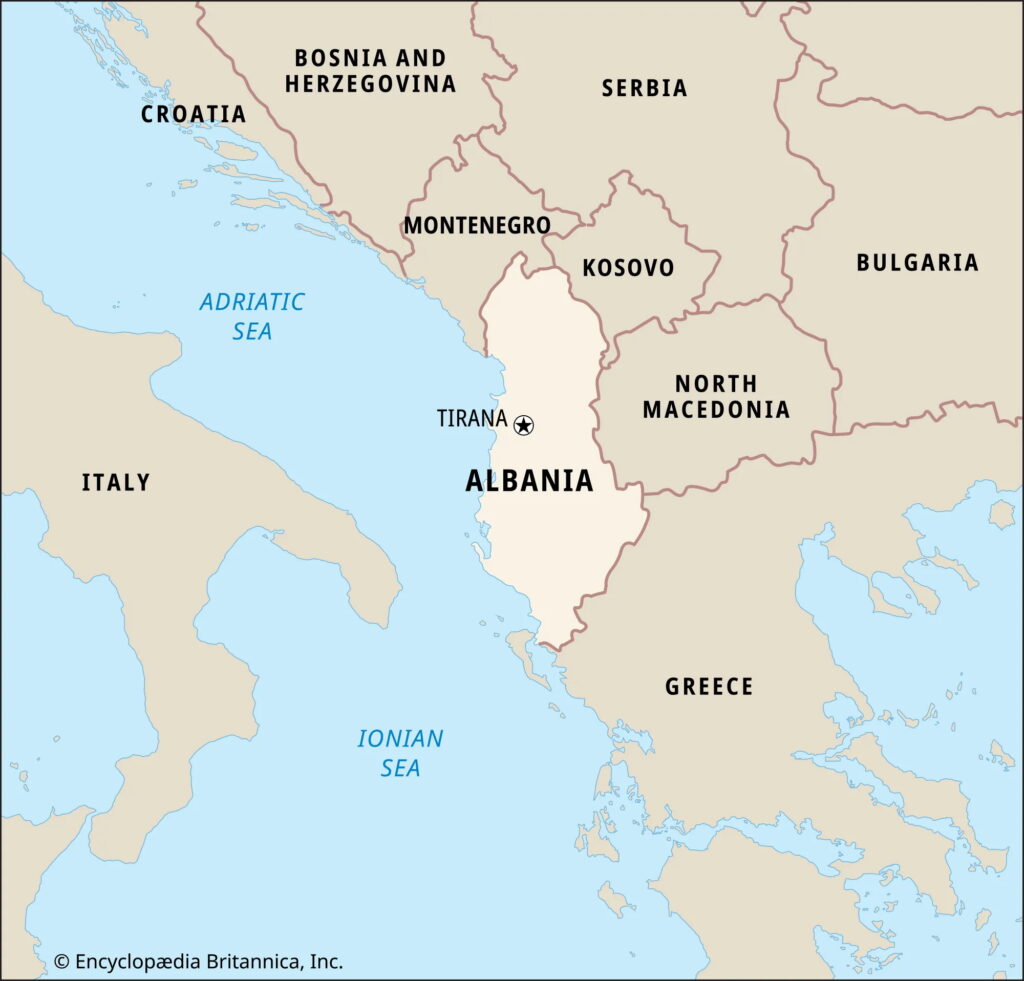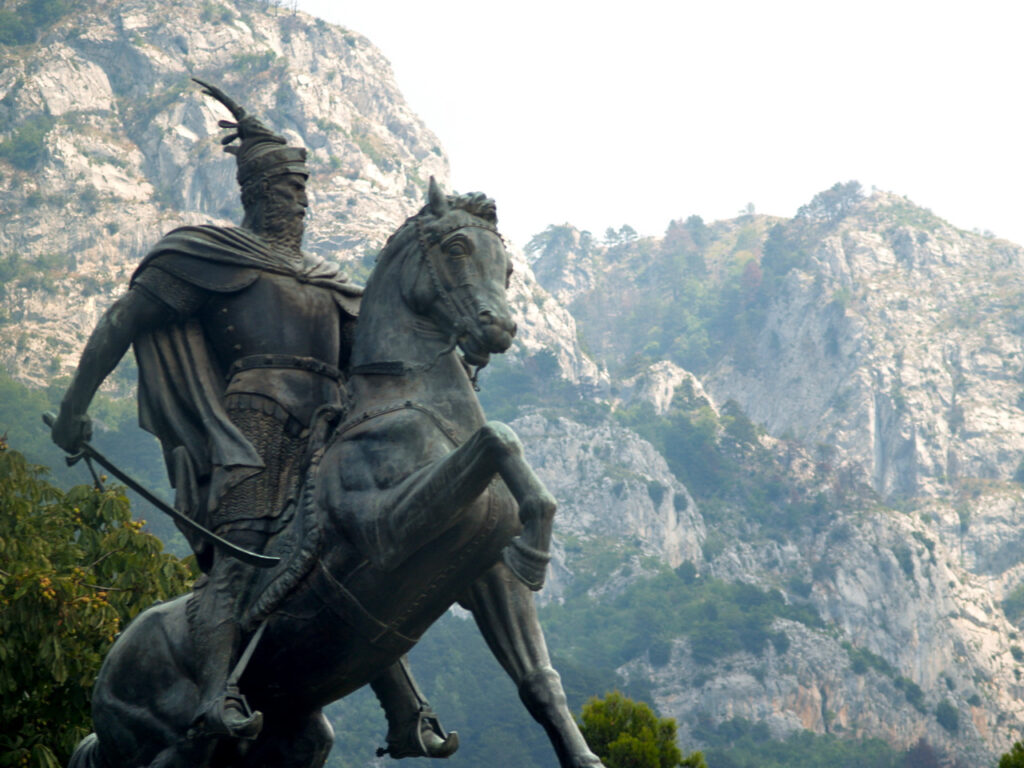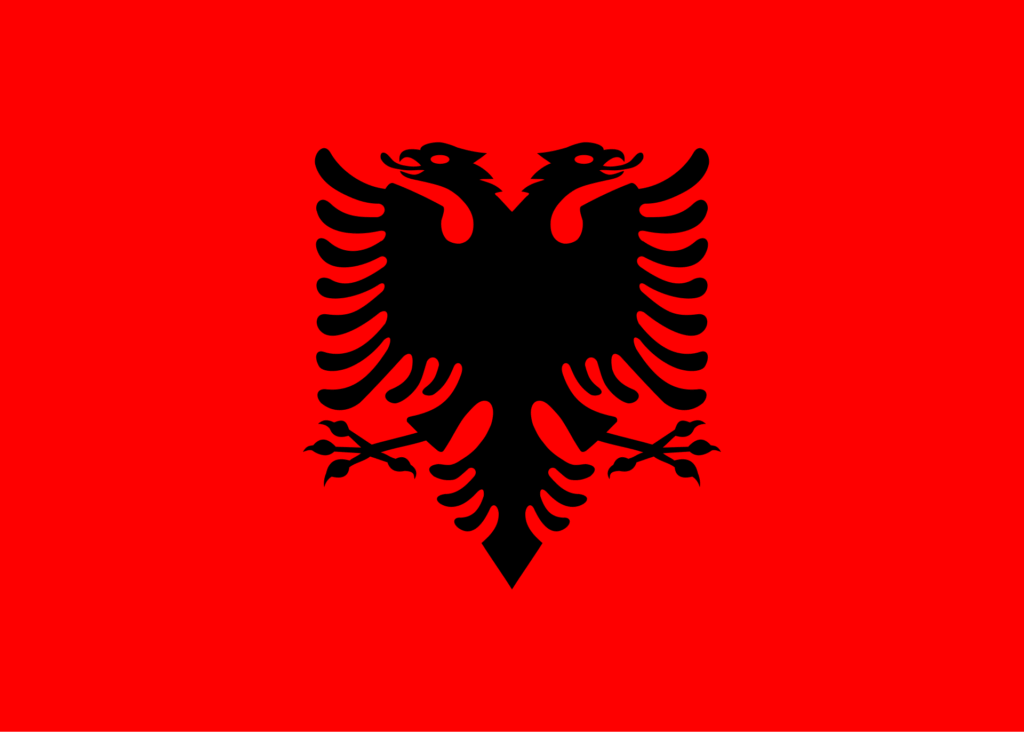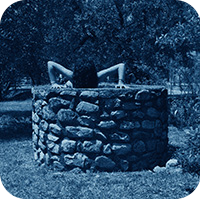Land of the Shtriga
Prefer to listen to this post? (It’s really me, not AI!)
It’s been a while since our journey took us to an actual place, like a country. Let’s get back to our roots here.
What makes something a horror representative of a nation? It can’t be merely that the country is used as a shooting location. If it were there would be hundreds of films we could consider Hungarian, Croatian, or Slovakian horror. Sometimes I think every third person on the street in Budapest is a film fixer. But that’s not how it works. To be a national horror generally requires either of these two characteristics (and the best have both): 1) majority cast and crew from the country — bonus if it is the director, writer, and lead actors and/or especially 2) the story centers on regionally- or nationally-specific fears, concerns, and/or cultural narratives. Very few filmmakers set out to make a national horror, though some do — looking at you A Serbian Film. But many use a region’s cultural memory of folklore or legend to make something unique.
So where are we going? If you’re coming from the USA, cross the Atlantic, and head to southern Europe. You can grab an espresso in Italy, but keep going. Cross the Adriatic, wave to the pretty dogs on the Dalmatian coast but do not stop — move southeasterly. Hit Greece? Too far. Back up. Our destination today is the incredible country of Albania in an installment called Land of the Shtriga.

First a very brief history of this land. As noted, my traveling compatriots, if you jump off the very heel of the boot of Italy right where the Adriatic Sea becomes the Ionian Sea you’ll hit Albania. Situated directly northwest of Greece and west of Macedonia, the tribal peoples of this land — known as Illyrians — were successively ruled by Greece, Alexander the Great, and eventually the Roman Empire. It was the establishment of independent Eastern and Western Roman Empires in 396 AD and even more so the schism between the western and eastern Catholic churches in the 11th century that created the remarkable diversity of architecture, religion, and peoples that populate the land to this day. Throughout the late medieval period the various principalities coalesced into something resembling an Albanian identity.
That is until the fall of Constantinople in 1453. The Eastern Roman Empire was no more as Ottoman Turkish forces pushed into what is modern day Albania by the end of the 15th century. Thousands of Christian Albanians fled to southern Italy during this period (including the ancestors of my paternal great-grandparents). Of note, this period is noted for national hero General Skanderberg who successfully defeated major Ottoman armies including those of Sultan Mehmed II, in the process uniting many of the principalities. If this sounds familiar to horror history fans your intuition is correct: Skanderberg was a contemporary of and very similar to Vlad Dracul III of Wallachia, known as Vlad the Impaler, our Count Dracula. He too fought against the Ottoman armies, holding them off for a time. Like Vlad, Skanderberg only delayed the conquest — a fact many historians credit with ultimately halting the expansion of the Ottoman empire at the Balkans and giving Italy enough time to mount an effective defense of Western Europe. The Albanian peoples continued to develop a united identity, but it was a unification under rule from Istanbul and amidst large-scale Islamization of its culture.

All of this to say to you, my tourists, that like many countries bordering the Mediterranean, Albania is a swirling mixture of peoples and beliefs stirred by a legacy of suffering as victims of imperial forces criss-crossing the Sea. To Western Europe Albania was an almost mythical place, sitting at the edge of what they considered enlightened civilization. Fans of Shakespeare will remember that his comedy Twelfth Night takes place in Illyria, a fictional setting (but obviously based on Albania) chosen for its exoticism and remoteness. This conception of Albania as a liminal place between worlds carries through in the Western imagination almost to the present day. A great setting for a horror movie, no?
World War I spelled the end of the Ottoman Empire and saw the birth of an independent Albanian state, a republic which lasted until invasions both by Mussolini and then, after his not-soon-enough encounter with a lamppost, by Nazi forces. In 1944 anti-Nazi partisans which included future leader Enver Hoxha, successfully liberated the nation leading to four decades of Communist dictatorship aligned alternately with the Soviet Union and Maoist China. With the fall of the Berlin Wall and eventually the Soviet Union, communist rule in Albanian also ceased leading to rapid Westernization in the 90s. Albania today is a multi-party republic, a member of NATO, and a candidate for EU membership.
Two special notes before we arrive at our destinations.
First, the Albanian national flag. Listeners, search for this magnificence right now so that you too may appreciate it. The Albanian flag may be my favorite national flag of all 195. It depicts a two-headed eagle, talons outstretched, in all black set against a blood red background. It’s clearly a bird, but you’d be forgiven for believing it more fantastic than that, like a Hydra or Cerberus. No staid symbolism, no echos of other countries’ flags, just a badass beast you do not want to mess with. In my opinion if you can’t tell if you’re looking at a biker gang tattoo or a national emblem you know a flag design is going to at least inspire awe.

Next we need to talk about the Gjakmarrja, the Albanian blood feud. The Gjakmarrja, based on a larger social code called the Kanun, is the social requirement to exact revenge usually via murder to defend one’s honor. The blood debts owed to an aggrieved family can extend generations if not paid. This code of socially-sanctioned revenge has been kept alive for centuries by tribal elders exclusively via oral transmission. As recently as 2018 police records noted 704 families affected by blood feuds. Fertile, blood-soaked ground for horror movies, no?
So let us now travel from blood feuds to actual blood — at least the cinematic kind. The truth is, Albanian horror as a genre is not even a decade old. While there are other Balkan and Kosovar examples of horror filmmaking, you can count the number of Albania-specific horror films on one hand, indeed one hand missing two fingers.
Bloodlands from 2017 is often considered the first Albanian horror film, though this was part of its own marketing effort so we’d need an actual film scholar to make a definitive call. The story here centers on the family of a butcher named Skender living on the edge of poverty in a clearly post-communist quasi-rural town. We are shown the actual butchering of a lamb in all its gory detail and you just know this is the most overt kind of foreshadowing. Skender’s shop is beset by grimy forest-dwelling people who scavenge offal from the trash until he runs them off. Meanwhile Skender sees a man on the street who he could swear died many years ago. Enter the shtriga, an Albanian witch (related, at least etymologically, to the strega the Italian witch). Turns out the shtriga leads a group of vagabond, possibly undead cannibals who eventually stumble upon Skender’s son in the forest. Skender goes looking for his boy and eventually blasts his captor with a shotgun. Thus begins the blood feud. Skender is abducted and gruesomely butchered (and eaten) exactly as the lamb he cut up days earlier. With no body to bury the family sets off to exact revenge for this revenge, leading ultimately to a confrontation with the shtriga. This isn’t a great movie, but it is absolutely horrific and totally steeped in very Albanian lore. The irony is that Bloodlands was written and directed by Steven Kastrissios, an Australian.
If postwar Albanian history is your thing, you’ll get it in spades with The Invocation of Enver Simaku from 2018. This film begins in 1997 during the tumultuous civil rioting — some call it a war — precipitated by the financial idiocy of the immediate post-Soviet government. (Like so many countries freshly out from under the Iron Curtain, Albania suffered from national monetary policies based on pyramid schemes and formerly nationalized industries being gobbled up by mafia-like oligarchs.) The narrator/documentarian, Julien, at the center of this camcorder-style film positions himself in the midst of these riots where his partner Angela is murdered, one of at least 2000 dead when it was all over. Twenty years later he returns to try to find out exactly how and why she died. What’s key here is the flourishing (or re-flourishing) of ancient folk beliefs after their official ban during the decades of Communist rule — Albania being the world’s first (maybe only) constitutionally atheist country during the Hoxha regime. Well the old ways flood back and Julien soon enough finds out that his partner was murdered by the brothers of Enver Simaku, a man in a 30 year-long coma who possessed by an Albanian demon known as the Kukuth There are no great kills, no jump scares, and only some passably creepy scenes. But The Invocation of Enver Simaku is a unique mixture of political history and supernatural folklore, neither of which is much known by audiences outside of the immediate region. This is also not a great film — just the mixture of languages is off-putting (English, Albanian, Italian, and Spanish — some but not all of which are subtitled), but its ambition is laudable and if you like slow-building drama that only flirts with being a true horror movie this is definitely for you.
Blades in the Darkness from 2022 takes the legacy of communist rule very literally. The whole thing takes place and was filmed in a disused Hoxha-era underground bunker. Like Enver Simaku this film also begins amidst the riots of 1997 where a young boy, Matia, seeks shelter in the abandoned bunker. He is scarred by a run-in with barbed wire and then bricked into the bunker by a crazy unregenerate communist named The Commander and his wife. Jump to 2022. The bunker is being visited by a group of investors — the term here being used extremely casually — interested in turning it into a nightclub and restaurant. There, while dealing with drug dealers owed a debt by one of the investors, they encounter Matia, horribly disfigured, all grown up, and presumably deeply scarred by a communist propaganda 8mm film he’s been forced to watch on repeat in the bunker for the past 25 years. He looks sorta like the Predator alien with long knives attached to the ends of his arms. At this point we have a slasher film as Matia rampages through the bunker, especially pissed off when the projector breaks and sets the corpse of one of his initial captors aflame. A corpse, it should be noted, that he has seated in a chair and which he animates like a marionette. Just sayin’ that 25 years without sunlight is not good for one’s mental health. Blades in the Darkness is maybe the most typical horror film in this lot, though with so many references to the last 50 years of Albanian history it’s easy to see why it could be interesting beyond the gore. For example, adult Matia is listed in the credits as “The Eagle” and his knife-hands do kinda resemble talons so let’s remember that dope Albanian flag. It makes an appearance in the fiery climax and Matia eventually bleeds out on the pavement in a way that exactly mirrors the flag eagle’s feathers. So obviously the filmmakers here are trying to say something about the country. I’m just not sure what exactly. Technical note: like most films that I can only find dubbed I probably would have enjoyed this more if it had been subtitled. Awesome movie poster though. And apparently there is a sequel to this the connection being that it … also employs blades? Hard to tell.
Then there’s Vlog#13 from 2023. iMDB says: “This film follows vloggers exploring Albanian legends, potentially incorporating horror elements based on folklore.” Now the word ‘potentially’ is the tell here: this film does not exist — or if it ever did it was a one-off showing somewhere that’s not recorded anywhere online. This film is not available to stream or rent anywhere and does not exist on any of the half dozen trackers I checked. Travelers if you have seen this movie or any of the vlogs 1 through 12, please call our hotline immediately. It sounds like a perfect anthology of Albanian frights.
So that’s all there is, really, my tourists. Albanian horror is a newborn baby. I do believe I watched everything I could that exists in this sub-genre. But this newborn has some wonderfully rich genealogy. The history of this often-overlooked land is full of subject matter that lends itself perfectly to horror. I say, if Romania can have a horror legacy (even if it was invented by a British Victorian) then so can Albania. Let’s make this happen!
Until next time, I am your faithful tour guide. Thank you for joining us on this journey.
A full list of the movies mentioned above can be found at Letterboxd. Find out where to watch there.
The Terror Tourist is my occasional segment on the Heavy Leather Horror Show, a weekly podcast about all things horror out of Salem, Massachusetts. These segments are also available as an email newsletter. Sign up here, if interested. The segment begins at 17:15 in this episode:













